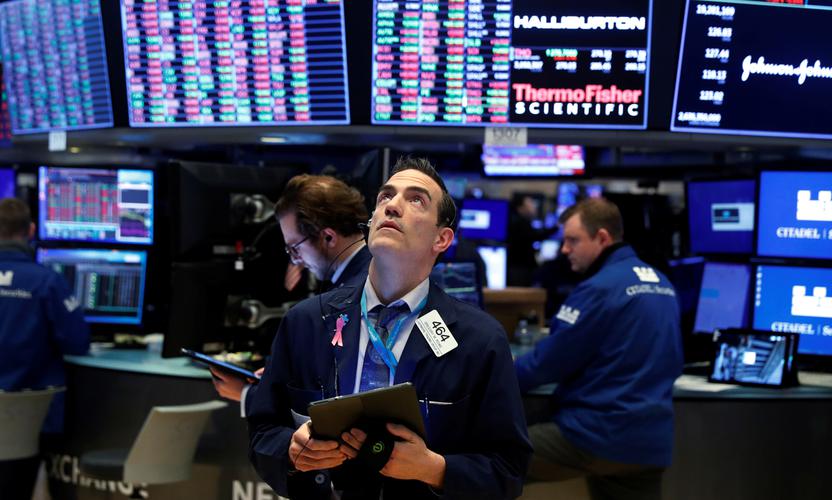For active bond managers, the dislocations present an opportunity to add exposure selectively in specific areas. However, with so much uncertainty ahead, investors need to tread carefully when attempting to capture potential upside and ensure that diversification within their portfolios is maintained.
High-quality bonds help dampen volatility
What an eventful year it has been, and it is only April. Long-dated US Treasuries have delivered a total return in excess of 20 per cent since January while the S&P 500 Index is down around 20 per cent over the same period (chart 1).
And while high-quality corporate bonds may not have fared as well as government bonds in total return terms, they have helped cushion the fall from traditional risk assets. For context, at an index level, global investment grade credit has posted a low single digit negative total return year-to-date (-4.4 per cent, in USD).
Put simply, if an investor had been fully invested from the start of the year in a diversified range of assets, the more high-quality government and corporate bond exposure they had in their portfolio, the better they’d have performed on average.
Spreads at attractive levels
A ‘normal’ recession playbook might have projected global investment grade (IG) and high yield (HY) credit spreads to widen by perhaps 250 and 1,000 basis points respectively. However, credit spreads have widened to more eye-watering levels at their recent peak, particularly in IG which posted a wide of 341 basis points, while global HY spreads touched 1,094 basis points (chart 2). The rush to raise cash among investors has further distorted valuations in credit markets, as well as other asset classes, including gold.
Combined with other measures, the massive quantitative easing programmes unleashed by central banks globally have brought some sense of stability to markets. In the US alone, this could allow for $200bn of IG corporate bond purchases before the end of the third quarter. Purchases will be at the front end too, sending a positive message to existing and prospective holders of high-quality, short-duration US dollar IG credit.
Expect ‘fallen angels’, but silver linings for bondholders
However, despite being a remarkably powerful backstop for credit markets, QE purchases do not represent a silver bullet. Downgrades and defaults are inevitable from here, with ‘fallen angels’ expected to be a key theme in the coming months.
Automotive and commodity-related sectors are likely to be among the first to be downgraded by credit rating agencies. The good news for bondholders is that moves to cut back on dividends, share buybacks and other shareholder-friendly activity are already leading to balance sheet prioritisation and the beginning of the next credit repair phase. We also believe systemically important IG companies will receive the support they need from the authorities.
Opportunities for active investors
This is an opportune time for active bond managers to re-assess issuers that look vulnerable to various economic and business risks, some of which may previously have been masked by broader market risk appetite and ample liquidity.
On a one to three-year view, history shows there is significant potential for strong risk-adjusted returns from credit at these spread levels (and wider). So, while past performance is not a definitive guide to the future, for investors looking to add risk in a more selective manner, corporate bonds seem a good place to start, particularly investment grade.
Lower for longer and longer
Following the deluge of recent action from central banks, both short and long-term interest rates are at their lowest levels in over 5,000 years[1]. With rates anchored for the foreseeable future and GDP expectations having nosedived, our long-held “lower for longer” thesis remains unchanged.
Unprecedented worldwide fiscal stimulus does present a risk of higher government bond yields, especially once the crisis has passed. So, why do we expect them to remain low? And why do we think any sell-off in yields might represent an opportunity for investors to add duration?
• Yield curve control seems to be the next logical step for policymakers to implement, capping the extent to which yields might back-up. If they do temporarily rise, therefore, this could present a buying opportunity for long-term investors.
• An ever-increasing global debt burden means the global financial system is increasingly sensitive to changes in interest rates, meaning yields are likely to remain lower for longer.
• Japan’s experience suggests high government debt combined with low growth will also keep yields low.
Japan will provide other lessons for us when we emerge from this crisis, including the prospect of government bonds continuing to post positive, real returns from much lower starting yields. It is also worth noting that the low rate structure will be broadly negative for pensions, insurance companies and savers, which should have a positive spill over effect for higher yielding corporate bond markets in the medium to longer term.
Fixed income within a diversified portfolio
Given the excess savings glut and record low interest rates, we think there is a growing need to invest somewhere, but businesses and financial markets more broadly are facing a whole host of challenges in the short to medium term.
For investors wary of another leg lower in risk assets, high-quality bonds continue to play a key role in maintaining a diversified portfolio. But for those who feel there may be some upside to returns across asset classes, caution should be exercised in how that is captured. As tempting as it has been in recent years to ‘underweight’ fixed income at a portfolio level (after an extended period of outperformance), we think there are good reasons to maintain and add to bond allocations at this juncture.
1] Bank of England






































